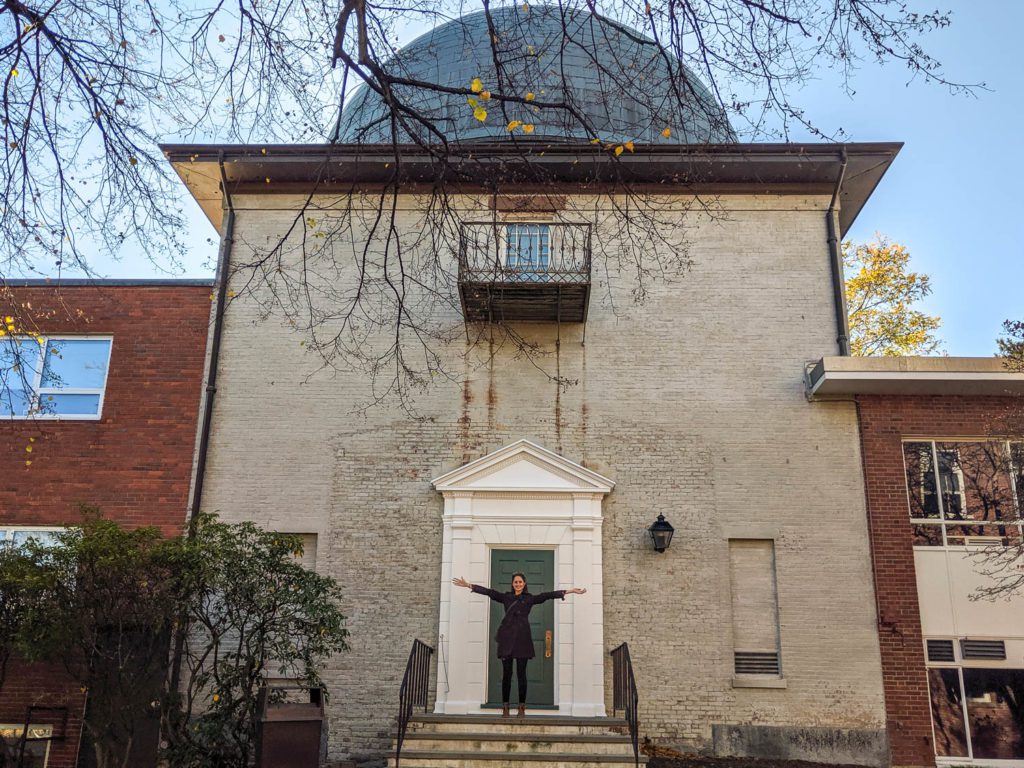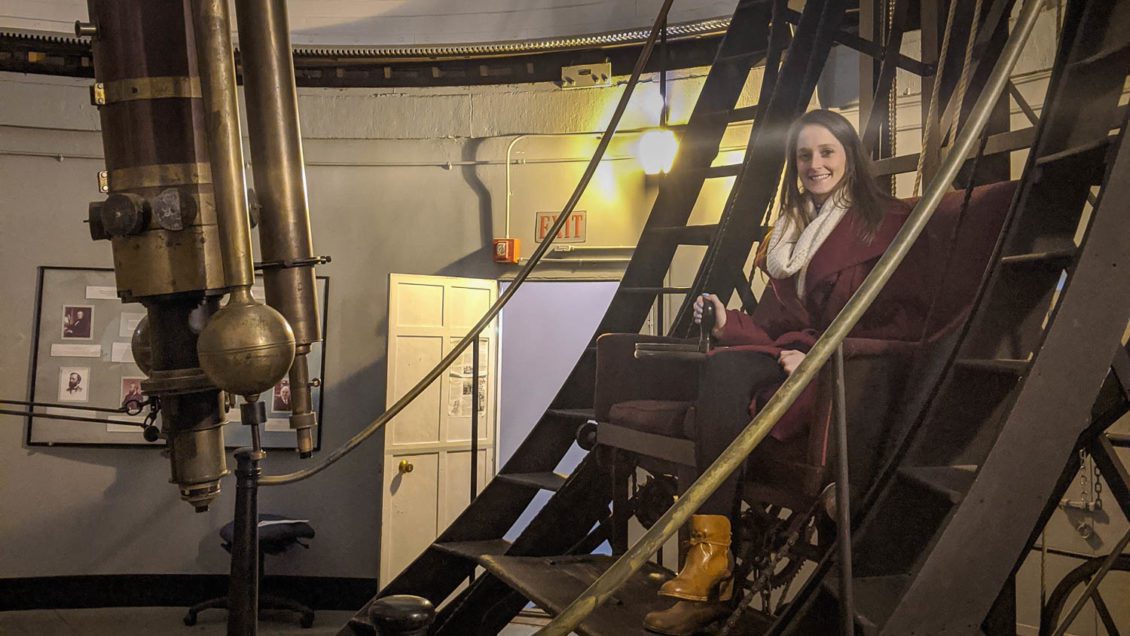Clemson University astrophysics graduate student Jordan Eagle has two key priorities as a scientist — research and outreach.
Eagle has spent the last two years at the Harvard & Smithsonian Center for Astrophysics (CfA) in Cambridge, Massachusetts, on a Chandra X-ray Center pre-doctoral fellowship. Eagle is completing her Ph.D. thesis on pulsar wind nebulae, which are descendants of massive stellar explosions, and the role they play in creating cosmic rays.
After she receives her Ph.D. from Clemson in August, Eagle will continue her studies at the NASA Goddard Space Flight Center as a NASA postdoctoral fellow.

When stars at least eight times the sun’s mass reach the end of their lives, they explode and leave behind remnants of ejected matter and energy called supernova remnants. Some supernova remnants have cores of stars at their centers and, if these stellar cores have enough leftover energy, they can power pulsar wind nebulae.
“Pulsar wind nebulae and supernova remnants are intimately related in the sense that they are coming from these core-collapse systems,” Eagle said. “They are very powerful environments, so we suspect they could accelerate the most massive energetic particles that have ever been observed on Earth, which are called cosmic rays.”
Cosmic rays are charged particles moving at nearly the speed of light, mostly generated from outside the solar system. They are detected here on Earth and can cause electronic problems in satellites and other space instruments. For instance, cosmic rays are a main source of contamination in space-based telescopes.
Origin of cosmic rays
While some cosmic rays may be produced by the sun, the majority of cosmic rays must come from far more energetic environments, such as the remains of supernova explosions or active black holes. However, these charged particles get deflected as they travel through space, which alters their paths and makes it difficult for scientists to determine where they originated.
Eagle’s Ph.D. and future research focuses on finding pulsar wind nebulae (PWNe) that emit high-energy gamma rays using the Fermi Large Area Telescope. Gamma-rays trace cosmic ray interactions and can be a powerful tool in understanding the possible environments producing cosmic rays.
At Goddard, Eagle will use the population of gamma-ray emitting PWNe from her thesis to predict what these objects will look like at lower-energy gamma rays. The lower-energy gamma-ray band is the least explored part of the light spectrum, so Eagle will focus on realizing the scientific promise of a future NASA mission that will probe these energies.

Many unknowns
“There’s still a lot we don’t understand in terms of the energetics of pulsar wind nebulae, which prevents us from understanding overall how these objects contribute to cosmic rays,” said Eagle. She hails from Hampton, Virginia, and earned her undergraduate degree at Radford University. She is a member of the research group of Marco Ajello, an associate professor in the Department of Physics and Astronomy in the Clemson College of Science.
“I am not in the least surprised by Jordan winning a coveted NASA Postdoctoral Program fellowship. From day one at Clemson, she has demonstrated outstanding research and time management skills coupled with a love for science dissemination. Her skills and passion brought her to finish her graduate studies at the Center for Astrophysics at the Harvard and Smithsonian. Soon she will move to NASA. It has been a joy to work with her in the past five years and I look forward to witnessing what she will accomplish in her future career,” Ajello said.
Like many astrophysicists, Eagle credits her interest in astrophysics to time she spent as a child looking at the night skies with her father, an amateur astronomer. While she was interested in astronomy, she was also notoriously bad at science and math in school.
It’s not so much about being good in math and science than it is about being committed to what you’re working on and being sure that what you’re putting forth is authentic, real and replicable science.
Jordan Eagle
“I’ve done a lot of math at this point that I think it would be fair to say that I am better at math than most people, but in terms of my peers, I’m still pretty bad at math. It’s not inherent to me. But it’s not so much about being good in math and science than it is about being committed to what you’re working on and being sure that what you’re putting forth is authentic, real and replicable science,” she said.
Her second priority — outreach — is covered with (On) Planet Nine, a YouTube channel she and four other female astrophysicists affiliated with Clemson have started. Their goal is to explain physics and astronomy simply for people without science backgrounds in an entertaining and interactive way. The channel’s name is a play on the phrase “on cloud nine,” while also hinting at recent evidence of a distant, massive ninth planet in the solar system beyond Pluto.
(On) Planet Nine is wrapping up its first season and has tackled topics such as Newton’s laws of motion, the scale of the universe, the history of astronomy, the big bang theory, the moon and the study of light. The season finale featured an interview with John Tomsick, associate director of the University of California, Berkeley’s Space Science Laboratory and the principal investigator for the recently NASA-approved Compton Spectrometer and Imager (COSI) low-energy gamma-ray project.
The College of Science pursues excellence in scientific discovery, learning and engagement that is both locally relevant and globally impactful. The life, physical and mathematical sciences converge to tackle some of tomorrow’s scientific challenges, and our faculty are preparing the next generation of leading scientists. The College of Science offers high-impact transformational experiences such as research, internships and study abroad to help prepare our graduates for top industries, graduate programs and health professions. clemson.edu/science
Get in touch and we will connect you with the author or another expert.
Or email us at news@clemson.edu

